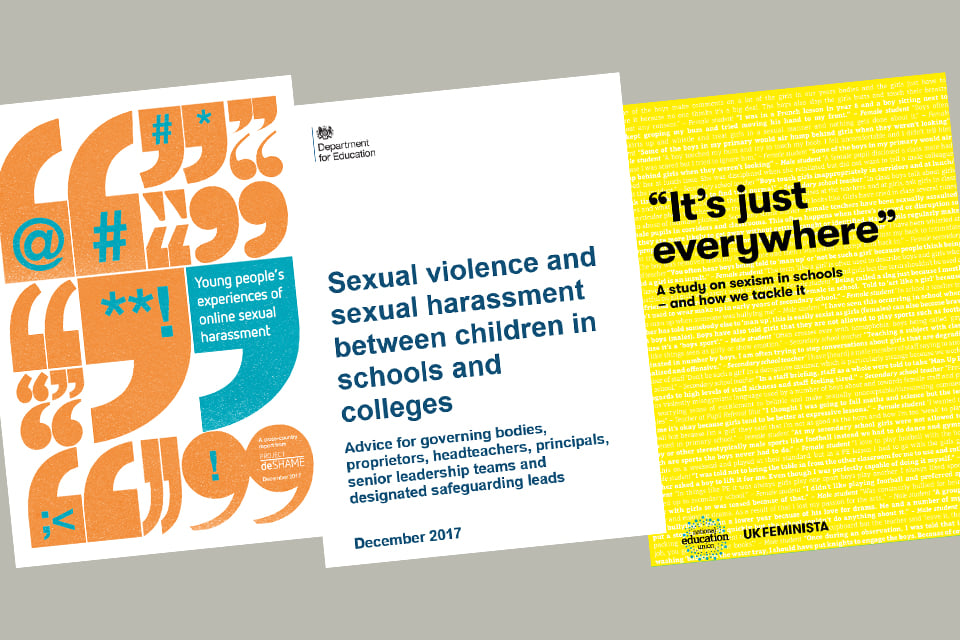The Department for Education (DfE) has launched new guidance for school leaders, safeguarding professionals and governing bodies/proprietors on peer-to-peer sexual violence and sexual harassment.

“Sexual violence and sexual harassment between children in schools and colleges” is also referenced in the proposed new Keeping Children Safe in Education document (see this previous blogpost) for September 2018.
The guidance stresses that schools absolutely must take all forms of sexual violence and harassment seriously and explains how it exists on a continuum, so it is essential that behaviours sometimes considered as ‘low level’ are treated seriously and not allowed to perpetuate. Schools need to take action on a range of issues and the document makes specific reference to behaviours which are often tolerated or treated as minor misdemeanours, such as bra-strap flicking and the careless use of language.
The LGfL DigiSafe team was proud to contribute to document’s development whilst it was being drafted, and we think the new DfE document provides clear guidance and helpful case studies to show schools what to do in certain situations. The following is taken from a summary of the document given in KCSIE.
- Schools and colleges should consider the following:
- It is more likely that girls will be the victims of sexual violence and more likely that sexual harassment will be perpetrated by boys.
- Schools and colleges should be aware of the importance of:
- making clear that sexual violence and sexual harassment is not acceptable, will never be tolerated and is not an inevitable part of growing up;
- not tolerating or dismissing sexual violence or sexual harassment as “banter”, “part of growing up”, “just having a laugh” or “boys being boys”; and
- challenging behaviours (which are potentially criminal in nature), such as grabbing bottoms, breasts, vaginas and penises. Dismissing or tolerating such behaviours risks normalising them.
- Children with Special Educational Needs and Disabilities (SEND) can be especially vulnerable. Disabled and deaf children are three times more likely to be abused than their peers. Additional barriers can sometimes exist when recognising abuse in SEND children (see paragraph 96 in Part 2 of this guidance).
The document will be updated again in response to the KCSIE consultation for September 2018, but already provides very useful guidance for schools and colleges. Its release is timely support for schools, coming shortly after two other useful documents on similar issues were published, by Childnet and the National Education Union/Feminista respectively: ‘Young people’s experiences of online sexual harassment‘ and ‘It’s just everywhere – a study on sexism and how we tackle it‘.
Both those studies are useful for schools to read: Childnet revealed that in the last year alone, 25% of 13 – 17 year olds had experienced online rumours about their sexual behaviour, 24% had received an unwanted sexual message or image, and 10% had been pressured to share a nude image of themselves. And the NUE report revealed that a quarter of all secondary teachers witness gender stereotyping and discrimination at school every day, and an even higher number (27%) did not feel confident about knowing what how to respond to a sexist incident at school.
Against this background, the publication of clear guidelines from the government on dealing with all levels of sexual violence and harassment can only be welcomed as a very positive step. So have a read and see how you can adapt your policies, procedures and strategic responses to incidents to begin making a change today.